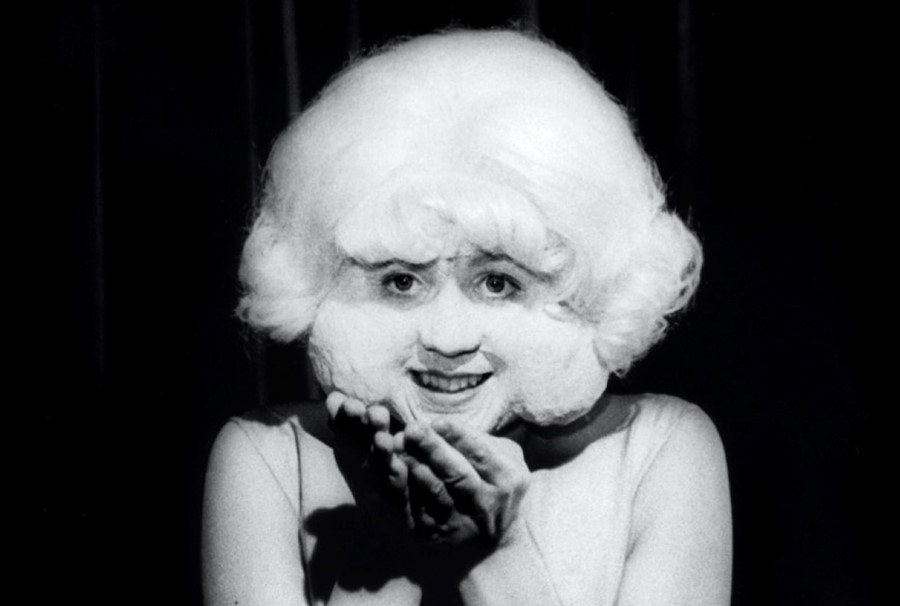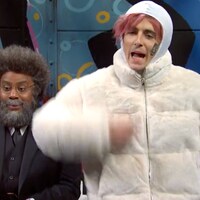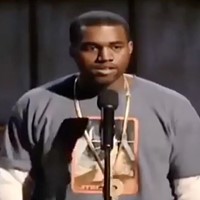From the hissing industrial noise of ‘Eraserhead’ to the creepy choral lines in ‘Candyman’, these are the scores that scared us silly
When a horror movie really bites, it’s often down to the soundtrack – that’s what controls the mood, the atmosphere, and whether fellow cinemagoers will mock you for squealing at all the scary bits. If the music’s done just right, the sounds emerge from the screen, like the girl from The Ring, to shake you senselessly and screech an important instruction down your ears: be afraid now! Or maybe the tension builds and builds, unbearably so, until you desperately need to scream for release, and then make a mental note to search for all the tracks on Spotify. To celebrate the unique ability to inject musical masterpieces into a horror, we’ve made a definitive rundown of our cult favourites – not including “Tubular Bells” from The Exorcist because it’s in too many adverts – because even a killer deserves a killer soundtrack.
HALLOWEEN (1978)
Director John Carpenter admits he’s not the most technically proficient keyboardist, which actually characterises his menacing score for Halloween. Simple and persistent, the repetitive riff mirrors the single-track philosophy of a bloodthirsty slasher villain with only one thing on his mind – and it ain’t piano lessons. Plus, we’re so used to everything sounding the same that the 5/4 time signature on its own is unsettling. Carpenter also adds a spoonful of “(Don’t Fear) The Reaper” in the car scene, which is the correct dose of classic rock, unlike the two whole spins he gives to ZZ Top’s “Bad to the Bone” in 1983’s Christine.
IT FOLLOWS (2015)
The “It” of It Follows either refers to the inconvenience of being stalked by a sex metaphor masquerading as a zombie, or the pulsating dread of Disasterpiece’s synth score that’s forever fuelling feedback in the shadows. Just as the film disorients with its anachronistic set design, so too do Disasterpiece’s sounds: retro in his old-school minimalism, but modern in how the clanging beats and whirring distortion evoke a digital era. Listen at your own leisure for a reminder that everyday existence is a real-life horror story with death just around the corner, and because on headphones it’ll add frisson to your walk home.
EYES WITHOUT A FACE (1960)
Nearly as distressing as the Billy Idol song of the same name, Georges Franju’s macabre Eyes Without a Face peeks into the claustrophobia suffered by a disfigured woman displaced from the outside world. In turn, Maurice Jarre’s manic score is practically circus music, swirling in circles around Edith Scob who’s dizzy from the forced isolation. Occasionally the instrumentals are elegant and hopeful, as if perhaps, just perhaps, everything will be okay and the secret laboratory will be used for good for once. But then the carnival rhythms return and yes, it kind of sucks when your dad is a murderous mad scientist.
SUSPIRIA (1977)
Prestigious ballet academies really know how to rock hard. Or maybe it’s the coven of witches summoning demons in the staff room. Either way, from its opening scene, Suspiria is like attending an awesome concert with a set list of heavy metal lullabies that just about drown out the yelps for help. Dario Argento’s giallo is beloved for its unapologetic OTT bravado, and prog-rock group Goblin expertly turn up the volume of their instruments (including a bouzouki) to compete with the overpowering colours and elaborate death sequences. If you’re going to be hung from the ceiling of your school’s foyer, it may as well be to idiosyncratic rock n’ roll.
NEAR DARK (1987)
Borrowing elements from vampire and western movies, Kathryn Bigelow’s Near Dark glides along smoothly to Tangerine Dream’s low-key electro score – a collection of synths that’s sexy, sulky, and underpinning of a late-night landscape fraught with deadly romance. In such a mash-up of genres, it’s the music gluing all the action together, with the right amount of cool to justify why a vampire would don an impractical leather jacket. The only downside is some MOR jukebox choices (John Parr, George Strait) in the infamous bar scene, which goes to show what a lack of sunlight can do to your music taste.
HAUSU (1977)
In a haunted house that vows to “eat all the unmarried girls”, the accompaniment by Japanese rockers Godiego is appropriately eclectic, oscillating between jazz funk, psychedelic folk and disjointed piano notes – although that cacophony is actually the munching sound of a hungry piano biting off human body parts. The special effects are deliberately cartoonish and the plot is too WTF to explain, which is all matched by a soundtrack infused with childlike wonder (the young characters expect a holiday), zany chord progressions (a watermelon turns into a floating head) and mournful arpeggios (well, they do keep dying).
CANDYMAN (1992)
No one expected Bernard Rose to snag Philip Glass for a preposterous B-movie, but the director evidently said the magic word five times (“please, please, please, please, please”) to make the composer appear. The coldness of Glass’ arrangements naturally lends itself to serious docs like Koyaanisqatsi and The Thin Blue Line, but Candyman is a slasher movie with enough bee-related silliness to rival Nicolas Cage in The Wicker Man. It just so happens this tonal mishmash – when the leads kiss with bees in the mouth, pristine choral harmonies sing on top – is what makes the action so perplexing and way more fun than Koyaanisqatsi.
ERASERHEAD (1977)
David Lynch’s sound designs have always sculpted unique worlds for his unlucky characters, starting with Eraserhead in which lead character Henry’s perpetual headache is emulated by industrial noises and hissing electrical cords. The onslaught of noise, always present, signifies the many troubling thoughts he can’t shake off, whether it’s sexual guilt, fear of being a parent, or perhaps something else from my subconscious I seem to be accidentally revealing. It’s not all doom and surrealist gloom, though; the lady in the radiator sings a heartfelt rendition of “In Heaven” (below), a melodic respite from the horribleness of when life doesn’t take place inside a radiator.
THE GUEST (2014)
A throwback to 70s horror, even during the scenes attacking the Iraq War, Adam Wingard’s The Guest rolls out a succession of electro-pop artists who would fit in snugly with Johnny Jewel’s Italians Do It Better label. But, unlike Drive, the songs here are lighter and optimistic, sometimes misguidedly so, as demonstrated by the climactic chase scene – a burned CD-R is played on a loudspeaker, forcing Maika Monroe to hear the mix she compiled for a crush who in return is trying to kill her. When the gorgeous grooves of “Anthonio (Berlin Breakdown Version)” slink in, it’s perfect – only the multiple stabbings dampen the mood.
YOUR VICE IS A LOCKED ROOM AND ONLY I HAVE THE KEY (1972)
With a knotty score to match a wordy title, Sergio Martino’s under-seen giallo was, like many of the period, dubbed entirely afterwards (see: Berberian Sound Studio), such was the value placed upon on the audio. Unsurprisingly, the jazzed-up, gothic soundtrack is the star, upbeat enough for the gory slaughters, and sleazy enough for all the gratuitous sex. Composer Bruno Nicolai also factors in plenty of harpsichord, which balances the right amount of catchiness and annoyingness to establish a marriage so fractured it crescendos with bloody murder.
THE LOST BOYS (1987)
If the soundtrack for The Lost Boys was a mixtape compiled by immortal vampires who’ve been biking since the dawn of human civilisation, maybe it’d include some 14th century Byzantine tunes for nostalgic purposes. But instead, it’s an entertainingly warts-and-all snapshot of the 80s, featuring INXS, The Who’s Roger Daltrey and, for some reason, the lead singer of Foreigner, as well as Echo & the Bunnymen’s creepy cover of The Doors’ “People Are Strange”. With these tunes, the villains are more frighteningly human and a bit like the jerks from your school, because nobody, even the undead, can resist doing an air guitar solo to Aerosmith’s “Walk This Way”.




